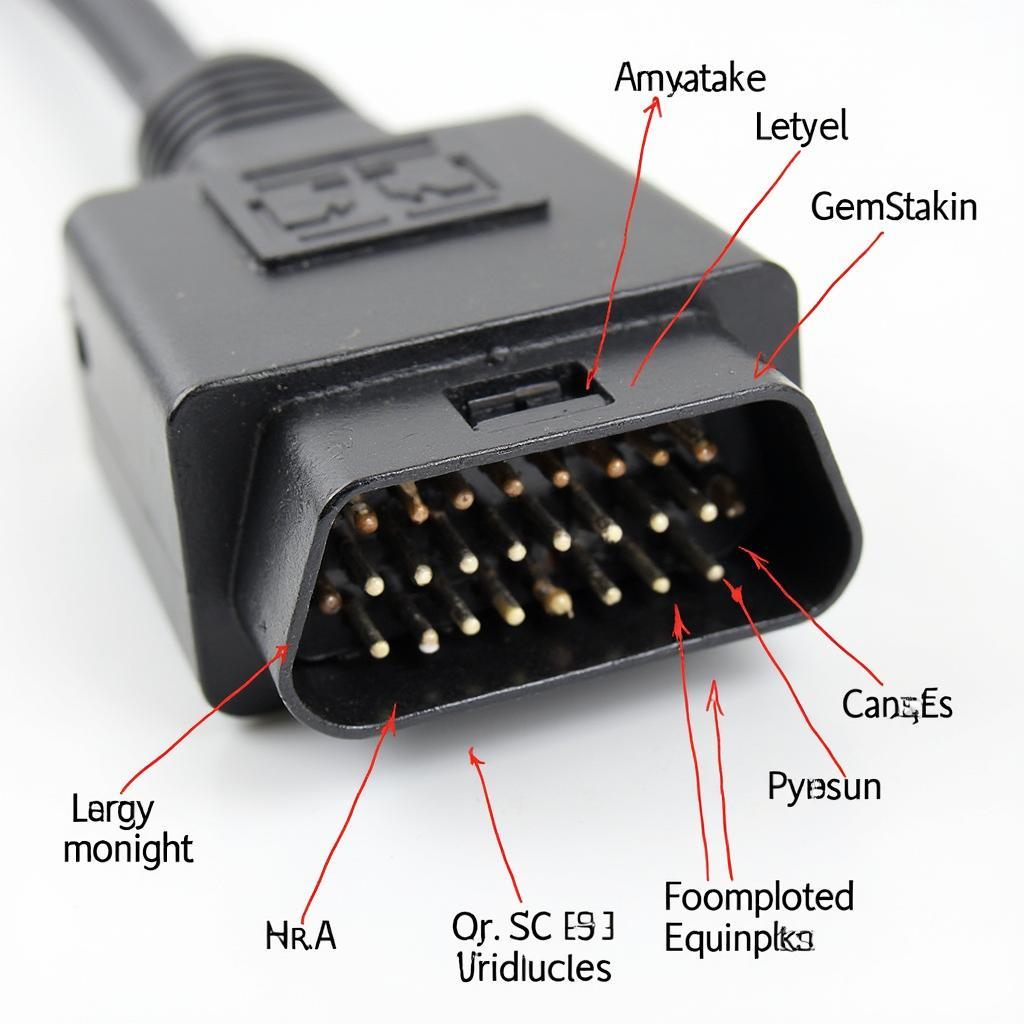The OBD2 message structure is the backbone of how your car communicates diagnostic information. This article delves into the intricacies of this structure, providing a comprehensive understanding for both car enthusiasts and professionals. We’ll explore everything from the basic components to the more complex aspects, empowering you to interpret and utilize OBD2 data effectively.
Deconstructing the OBD2 Message: Key Components
The OBD2 system uses a standardized message format to transmit data between the vehicle’s electronic control units (ECUs) and the diagnostic scanner. Each message is carefully structured to convey specific information. These messages consist of several key components:
- Mode: The mode represents the type of diagnostic request being made. Different modes access different types of data, ranging from current powertrain data (Mode $01) to vehicle information (Mode $09).
- Parameter ID (PID): The PID specifies the particular parameter being requested within a given mode. For instance, within Mode $01, different PIDs correspond to engine speed, coolant temperature, and other vital engine parameters.
- Data: This section contains the actual values requested by the PID. The length and format of the data vary depending on the specific parameter being measured.
How to Interpret OBD2 Messages
Interpreting obd2 message involves understanding the relationship between the Mode, PID, and Data. For example, if you request Mode $01, PID $0C (Engine RPM), the data returned will represent the current engine speed in revolutions per minute. This data is typically encoded in hexadecimal format and requires conversion to a usable value.
Common OBD2 Modes and their Uses
Understanding the different modes is crucial for effective diagnostics. Here are some commonly used modes:
- Mode $01: Provides access to current powertrain data. This is the most frequently used mode for real-time monitoring of engine performance.
- Mode $03: Retrieves stored diagnostic trouble codes (DTCs), which indicate specific malfunctions detected by the vehicle’s ECUs.
- Mode $04: Clears stored DTCs and resets the check engine light after repairs have been completed.
- Mode $06: Provides access to test results for on-board monitoring tests performed by the vehicle’s ECUs.
- Mode $09: Retrieves vehicle information, such as the Vehicle Identification Number (VIN) and calibration IDs.
Advanced OBD2 Message Analysis: Going Deeper
Beyond the basic structure, obd2 message format can include additional information, such as checksums for data integrity verification. Understanding these advanced aspects can be helpful for troubleshooting communication issues and ensuring the accuracy of the retrieved data. As vehicles become more sophisticated, the complexity of OBD2 messages also increases, with more detailed data being transmitted and logged.
Why is Understanding OBD2 Message Structure Important?
A clear understanding of obd2 message structure is essential for effectively diagnosing car problems, customizing vehicle performance, and even developing obd2 programming language applications. This knowledge empowers you to interpret the data provided by your OBD2 scanner and make informed decisions about your vehicle’s maintenance and repair.
“Understanding the OBD2 message structure is like learning the language of your car,” says automotive expert, Dr. Robert Carter. “It allows you to have a direct conversation with your vehicle’s computer, uncovering hidden issues and optimizing performance.”
 OBD2 Connector Closeup
OBD2 Connector Closeup
Conclusion
The obd2 message structure is a crucial element of modern vehicle diagnostics. By understanding its components and how they interact, you can unlock a wealth of information about your car’s health and performance. This knowledge is valuable for both DIY enthusiasts and professional mechanics. Remember to explore resources like the obd2 header for more detailed information.
“Mastering the OBD2 message format gives you a significant edge in the automotive world,” adds Carter. “Whether you’re a seasoned mechanic or a curious car owner, this knowledge is invaluable.”
Need help with OBD2 codes like obd2 420 code? Contact us via WhatsApp: +1(641)206-8880, Email: [email protected] or visit us at 789 Elm Street, San Francisco, CA 94102, USA. Our 24/7 customer support team is ready to assist you.